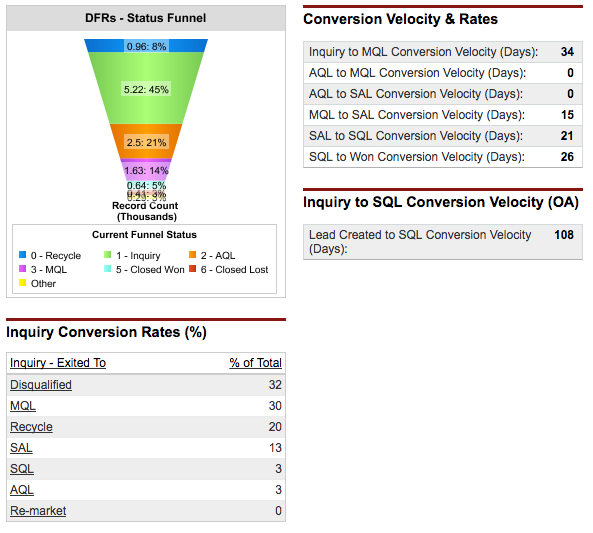Don’t worry, I’m not going to talk about the “frameworks” that typically come out of the all-day strategy workshop with stale coffee that results in zero action and a waste of everyone’s time.
So, why would I want to bring up such a stale (like the aforementioned coffee) topic as frameworks? Simply put, the lack of a well-defined framework is the biggest underlying reason for a lack of effectiveness in an organization’s Demand Factory™.
You wouldn’t construct a building without a solid foundation
You’re spending a lot of money on tools, technology, people, and processes to build your Demand Factory, so don’t build it on a wobbly foundation.
What exactly is a framework, anyway? A quick Google search for “what is a framework in business” or “what is a framework in strategy” will bring up 1,000,000+ results, but nowhere in the top 10 do they actually tell you what a framework is or its value.
Check out the straight-up dictionary definition of framework:
“a basic structure underlying a system, concept, or text.”
More practically, well-defined Demand Factory frameworks provide shared taxonomies and processes, giving everyone across sales and marketing, regardless of roles or responsibilities, a single way to communicate and understand what is going on with lead and revenue flow.
They also allow for data to be grouped in meaningful ways, such as by distinct channels and sources for each lead, and ensure that the pieces of reporting required to make strategic decisions and tactical course corrections are in place.
Several key frameworks form the foundation for every activity in the Demand Factory. While not a comprehensive list, here are some of the most common:
- Lead Management Framework (aka the Demand Funnel): Probably the most essential framework for managing leads to revenue, it provides a common language that lays out the roles and responsibilities for leads at each stage. It also defines key actions and outcomes on the buyer’s journey from prospect to customer.
- Reporting Framework: A systematic way of tagging marketing activity to identify what is and isn’t working and where you should focus your funds in the future. If you don’t have a framework to tag your campaigns, emails, web pages, and other types of lead information in a similar manner, you can’t pull the metrics you need for informed decision-making.
- Segmentation Framework: Defining your different audiences along with their unique characteristics and how to identify them in your database (check out my recent blog post for more information on segmentation).
- Lead Nurture Framework: A framework to get the “right message at the right time to the right person.” Once the segmentation framework has been identified, the nurture framework then lays out how marketing will engage with them.
What kind of reporting can you run when you’ve got your frameworks in place?
With a lead management framework as the foundation, you can build out reporting to view leads not only by funnel stage, but also average velocity numbers from stage to stage, estimated pipeline, channel conversion effectiveness, and more.
Here’s just one example of some of the visibility you can build on top of a lead management framework that would be impossible without one:

Parlez-vous data?
If you don’t have a single, shared definition of a lead, what marketing thinks is a lead and what sales thinks is a lead can be two very different things. Marketing may send over $100k in pipeline, but if Sales rejects $90k, you’ve wasted 90% of your efforts.
Once sales and marketing speak the same language, sales gets the kinds of leads they want and marketing can more accurately measure what’s in the pipeline and where to spend their dollars in the future.
DemandGen offers extensive lead management services, and can help you develop your own framework and put it into action.
In my next few posts, I’ll go into more detail on some of the other frameworks, implementation pitfalls, and how to avoid the “all-day workshop with stale coffee and zero results.”
Already found success with a framework of your own? Share your story in the comments!

Ryan Johnson develops and implements marketing automation strategies for DemandGen clients. As a DemandGen Consultant, he has helped clients across a wide range of industries to streamline and optimize their marketing and sales processes to drive measurable success and ROI.
The post Getting to Meaningful Metrics: How Frameworks Underlie Your Ability to Measure Your Effectiveness appeared first on DemandGen.
About the Author
More Content by DemandGen
























